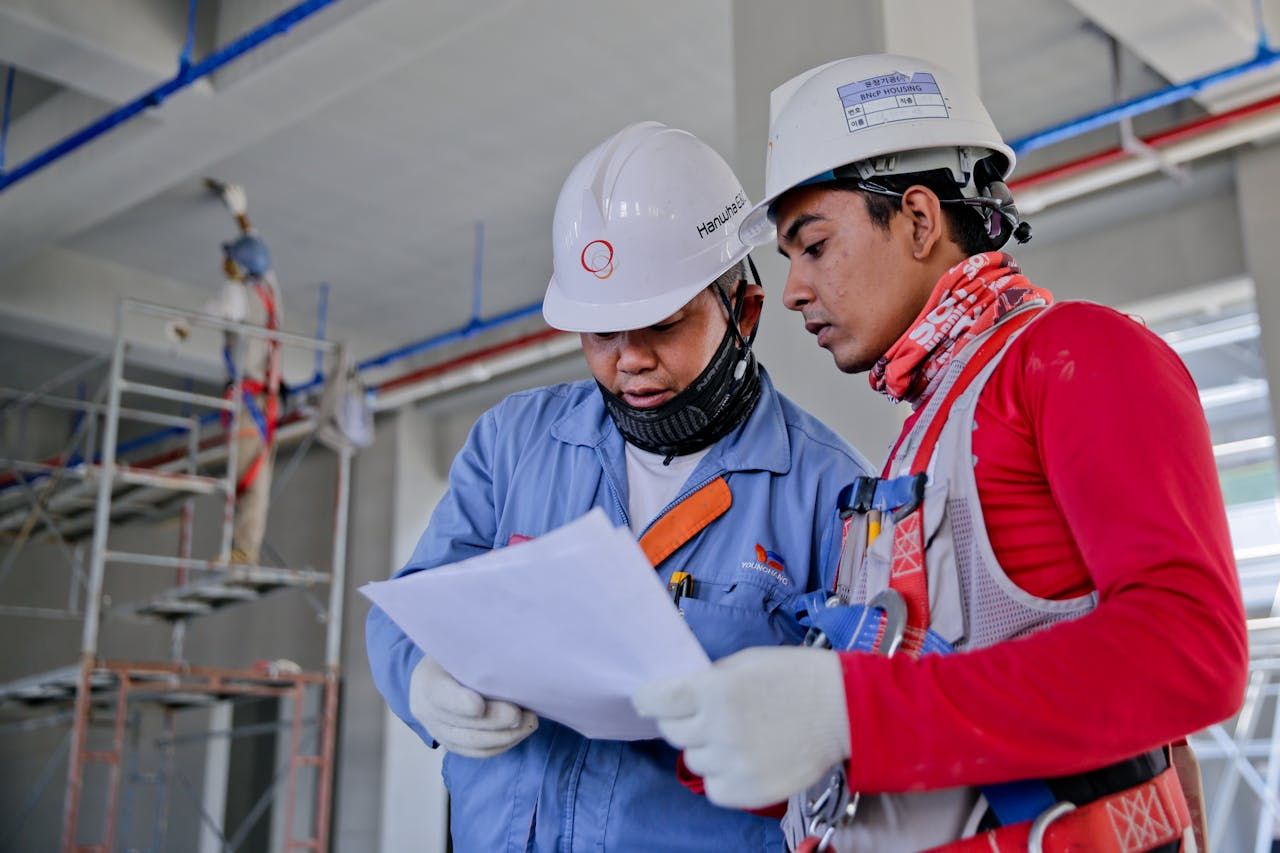Flipped Classroom Model Guide for 2026: Method Definition, Benefits & Examples
Some people may not find it that weird of an idea to “flip" the classroom in this day and age, when turning conventional notions and ideas on their heads is seen as “revolutionary" and is thought to help make certain topics more engaging. But what precisely is a flipped classroom, and to what extent is it a “revolutionary" approach to education?
This article will cover the idea of the flipped classroom, as well as its benefits and drawbacks, how it has worked in various settings up to this point, the considerations that should be made before transitioning to this method of teaching, and how it should be carried out. This should serve as a useful guide for instructors who are thinking about using this practice in their classrooms.
Flipped Classroom Guide for 2026 Table of Contents
- The Flipped Classroom Defined
- Advantages and Disadvantages of Flipped Classroom
- How can the success of a flipped classroom be evaluated?
- How does the flipped classroom model influence career readiness?
- How can flipped classrooms prepare students for remote work?
- How can educators further develop their skills for effective flipped classroom teaching?
- Considerations for Flipping the Classroom
- How to Flip the Classroom
- Adopting the Flipped Classroom
- How can flipped classrooms be adapted for diverse learning styles?
- What strategies ensure equitable access in flipped classrooms?
- Can flipped classrooms accelerate career transitions and academic outcomes?
- Can flipped classrooms be effectively scaled in large educational settings?
The Flipped Classroom Defined
If the traditional classroom is defined by the teacher discussing the lessons and the students going over what they learned and doing homework related to the lesson afterwards, the flipped classroom, as the name suggests, flips things around. In this case, the students are asked to study the lessons on their own as they watch their teacher explain the lessons in a prerecorded video or another medium. The next day, the students will do the assignments, which the teacher will discuss afterwards. This either builds on or reorients the students on what they learned as they were doing their homework.
In essence, the flipped classroom reverses the roles of home and school in the greater learning environment, something which proponents say would improve the student’s learning experience while also creating what is considered a more suitable function for the home and school in the learning process. This shall be discussed further in the succeeding section.
The Relation Between the Flipped Classroom and Flipped Learning
The concept of the flipped classroom is oftentimes associated with flipped learning, with many thinking that both concepts are interchangeable. However, this is a misconception. Flipped classroom refers to the manner of teaching a class while flipped learning goes beyond that as it aims to move away from the group learning setup usually found in the classroom (traditional or flipped), towards an individual-focused learning setup, which provides for a more dynamic and interactive learning environment.
What this means is that a flipped classroom alone does not bring about a flipped learning experience. On the contrary, flipped learning requires a greater overhaul of teaching methodologies commonly used in schools, which would take quite long to accomplish compared to a transition towards a flipped classroom. At times, it is attributed to some form of asynchronous learning. However, the two types of learning are distinct, albeit with a few overlapping concepts and techniques.

Advantages and Disadvantages of Flipped Classroom
One of the main flipped classroom benefits is that it helps create a better learning experience for students. And it is easy to see how this can be the case.
With assignments being done in school rather than at home in the flipped classroom setup, students can get help quickly from their teachers. This also eases the burden of the parents who usually bear the burden of answering complex homework questions that they may not be able to answer.
Another benefit is that students can study their lessons at their own pace and their own way and not be beholden to their teacher’s pace which they may not appreciate. This helps them better absorb the lessons in the process without the pressure of having to finish assigned school work at home which not only takes time away from family but also personal time normally spent at home. It can also leave students confused and stressed such that they would be driven to finish their assignments without understanding the lessons.
For teachers, the flipped classroom allows them to be flexible in the way they teach their students. In fact, it is not a requirement for them to flip their entire class. They can opt to flip even just a single lesson or instead create a blended learning experience that combines the elements of a traditional and flipped classroom. And with the real-time feedback they receive, they have more awareness early on as to how the students understand the lessons and can make the necessary adjustments for the students to have a better grasp of these lessons. (Panopto, 2020)
Despite the benefits, the flipped classroom has its critics who argue that it is not as effective as thought to be. This is primarily due to the challenges that affect its touted efficiencies in the real world. Foremost of the challenges of flipped classroom is the state of technology in different parts of the world. Technology plays a crucial role, especially in delivering lessons to students in the flipped classroom. In some areas, access to technology is not as reliable as in other places, which greatly hinders the adoption of the flipped classroom model across the globe.
Likewise, poverty is a primary factor as not all families can afford the technologies or even the internet access itself needed for the flipped classroom. For some, this can exacerbate the digital and social class divide with poorer students being left out compared to the more well-off students. (Trach, 2020)

How can the success of a flipped classroom be evaluated?
Evaluating a flipped classroom requires a blend of quantitative metrics and qualitative insights. Establish structured pre- and post-assessments to gauge academic improvement and student engagement. Utilize analytics from digital platforms to monitor participation levels and task completion rates, ensuring that measurement tools align with the targeted learning outcomes. Supplement this data with periodic surveys and in-class feedback to capture the nuances of student experiences. Leaders in education seeking to integrate innovative management strategies may consider pursuing an online executive MBA to enhance their expertise in data-driven decision-making.
How does the flipped classroom model influence career readiness?
Implementing a flipped classroom not only transforms academic engagement but also cultivates competencies vital for today’s professional landscape. The model encourages learners to become self-directed, improving digital literacy, critical thinking, and collaborative problem-solving skills that mirror workplace expectations. By taking control of their learning process, students develop adaptability and resourcefulness—qualities that employers value highly. Additionally, the acquisition of these skills can open pathways to advanced education and career opportunities, such as exploring the most lucrative masters degrees.
How can flipped classrooms prepare students for remote work?
Flipped classrooms foster skills that are essential for thriving in remote work environments. By leveraging self-paced digital assignments and interactive virtual discussions, this model develops digital literacy, autonomous problem solving, and effective communication in online settings. Students gain hands-on experience in managing time-sensitive projects and collaborating through digital platforms, skills that are crucial for today's decentralized work culture. Moreover, integrating real-world case studies and virtual group assignments further bridges academic learning with the demands of digital careers. For guidance on aligning education with remote work opportunities, explore degrees for remote jobs.
How can educators further develop their skills for effective flipped classroom teaching?
In today’s dynamic educational landscape, targeted professional development is crucial for ensuring the successful implementation of the flipped classroom model. Educators are encouraged to pursue specialized training that focuses on digital content creation, innovative assessment techniques, and management of online learning environments. Participation in collaborative learning communities and industry-recognized workshops enhances teaching methods and fosters a culture of continuous improvement. Moreover, engaging in short term certificate programs can equip instructors with the latest tools and strategies required for effective flipped classroom delivery, ultimately benefiting both teachers and students.
Considerations for Flipping the Classroom
Flipping the classroom is a huge undertaking, which should be approached carefully. Given the flipped classroom pros and cons that were discussed earlier, it is important to put them into consideration in deciding whether a flipped classroom should be pursued and in what areas they are applicable.
For teachers looking to adopt a flipped classroom, there are four key considerations to keep in mind:
- How students access technology, especially the internet. As noted earlier, not everyone has equal access to these resources so it’s important that the flipped classroom technology setup must be one that, at the very least, can be easily accessed by all students at a standard level. For example, employing the latest video training trends may become a barrier to students who are using computers that do not meet the minimum requirements of the tools that you are using.
- Presentation of content is important but should not be the primary element of the flipped classroom. Given the current trends in visual content, teachers are being challenged to present their lessons in the same vein as these trends. While creating such content can help make the lessons more engaging to the students, teachers must be reminded that the visuals should not distract students from learning the lessons these visuals seek to illustrate in the first place.
- Pedagogy should drive the technology, not the other way around. Whatever technology the teacher uses to deliver the lesson content, the pedagogy or the way the teacher teaches the lessons is far more crucial
- The flipped classroom requires much more work than the traditional classroom. Teachers should prepare for the work involved in setting up a flipped classroom, from ensuring access to technology among students to preparing the content itself, to ensuring that the equipment to be used is up to standards. Any sign of lack of effort can lead to the failure of the flipped classroom experience.
How to Flip the Classroom
For teachers who wish to achieve the goal of flipping the classroom, there are key steps that need to be followed:
1. Choosing the technology
For a flipped classroom, the teacher must be able to secure a stable internet connection, the equipment for filming the content, software to edit and share the content, as well as hosting services that will host the content to be shared with the students. If the content involves both video and documents, some services may allow for the sharing of both types of files. Teachers can also combine various types of media for enhanced learning, such as embedding a YouTube Video within a PowerPoint presentation.
2. Content creation
Unlike classes in a traditional classroom, there are fewer distractions in the flipped classroom since classroom management is not a factor. Coupled with the concept of making video content as short and concise as possible, creating video content for the lessons should follow the standards of video content creation as well.
3. Practicing transparency
Teachers should clearly explain the idea of the flipped classroom to the parents and students before proceeding. This is important as this particular change is a major one, not to mention one that upends the long-held views and traditions of the traditional classroom. Explaining this change and striving to attain the goal of acceptance of this change among others is not an easy task. One has to be prepared to address questions and allay some fears as well.
4. Enforcing accountability
More than the technology, the flipped classroom is more about the participation of students. Any lack of engagement can be a roadblock in the conduct of the class as the students will not be able to engage in class-related activities. It is important for students to be accountable in class and to follow the lessons being presented. Gamification of the lessons such as holding recap quizzes or tickets is one way to ensure such accountability. And if a learning management system (LMS) is being utilized, results can be generated in real-time.
5. Practicing consistency
Teachers in the flipped classroom are expected to have established an efficient process that involves planning the lessons, filming content, and assessing students in a seamless workflow. More importantly, that established process should be practiced consistently. As such, creating a classroom management plan example for this learning model is crucial. This is to help teachers focus more on helping the students instead of ending up not having enough time because much of it was spent trying to fix the nuts and bolts of the process, so to speak.
Adopting the Flipped Classroom
With regards to its efficiency, the results are mixed at best with different studies stating different findings on the value of the flipped classroom. One study cited that students were generally satisfied with the approach due to the ease of access to resources for self-paced learning (Michigan State, 2021). Meanwhile, another study found that while flipped classrooms are a viable learning model, students are generally disinterested to participate in classes without a grade incentive at stake. (Singh, 2021) One other study asserted that flipped classroom and flipped learning, in general, did not necessarily contribute to lifelong learning nor an increase in 21st-century skills. (Smith, 2021)
It is expected that more research will come out about the flipped classroom as it continues to evolve in the midst of an unprecedented adoption rate during this pandemic. It is clear though from what is available thus far that the concept still has a long way to go.
How can flipped classrooms be adapted for diverse learning styles?
The flipped classroom model offers flexibility in learning, but to ensure all students benefit, it’s essential to adapt it to accommodate diverse learning styles. By incorporating varied instructional methods and engagement techniques, educators can help each student maximize their learning potential within a flipped classroom environment.
- Use of Multimedia Content: Provide lessons in various formats—videos, infographics, podcasts, and written summaries—to engage visual, auditory, and reading/writing learners. Allow students to choose the format that best suits their learning preferences.
- Interactive Learning Materials: Incorporate interactive digital tools, such as quizzes, simulations, or discussion boards. These allow kinesthetic learners to engage actively with content through hands-on activities.
- Structured Group Work: Use class time for collaborative projects, peer tutoring, or problem-solving sessions. Social learners benefit from these activities, as they enable students to discuss and apply concepts in a group setting.
- Self-Paced Options: Allow students to control the pace at which they go through pre-class materials. Self-paced learning empowers introverted or reflective learners who benefit from additional time to process information independently.
- Personalized Assignments: Offer varied assignment options (such as presentations, written reflections, or creative projects) to cater to diverse ways of expressing understanding. This flexibility encourages students to present their knowledge in a format they find most comfortable.
- Flexible Assessment Methods: Incorporate different assessment types, such as concept maps for visual learners, recorded verbal explanations for auditory learners, and interactive tests for hands-on learners. Diversifying assessment techniques ensures all students have a fair chance to demonstrate their knowledge.
What strategies ensure equitable access in flipped classrooms?
Addressing digital equity is essential for maximizing the benefits of the flipped classroom model. Institutions and educators should implement measures that mitigate access gaps by establishing device lending programs, securing affordable internet partnerships, and promoting community-based support initiatives. Furthermore, investing in teacher training on accessible digital tools and resource management is crucial to foster an inclusive learning environment. Leveraging affordable educational pathways, such as online associate degree programs, can provide additional opportunities for professional development in resource-constrained settings.
Can flipped classrooms accelerate career transitions and academic outcomes?
Flipped classroom strategies foster a learning environment that promotes rapid acquisition of skills and streamlined academic progression. This model encourages self-directed learning and adaptive problem-solving, enabling students to swiftly align their studies with the demands of evolving job markets. Educators can integrate targeted skill assessments and real-world projects to create a robust framework for career preparedness. Such approaches not only pave the way for effective lifelong learning but also complement educational pathways like short degrees, which are designed for accelerated entry into high-demand professions.
Can flipped classrooms be effectively scaled in large educational settings?
Implementing the flipped classroom model across large educational institutions requires robust digital infrastructure, structured faculty development, and committed administrative support. Institutions must design systems that accommodate high student volumes without compromising personalized learning. Investing in continuous teacher training, establishing clear performance metrics, and ensuring adaptive resource allocation are essential. Moreover, aligning scalable academic practices with career-oriented outcomes can foster long‐term sustainability, especially when institutions integrate programs leading to highest paying majors.
Lessons from the Pandemic
The level of awareness and adoption of a concept as recent and revolutionary as the flipped classroom was unprecedented in the wake of the COVID-19 pandemic. In the same vein, the pandemic brought serious challenges to the concept as schools, teachers, parents, and students were unprepared to understand the idea and nature of this model. Regardless of the reception, the flipped classroom has helped the education system across the globe cope with the devastating effects of the pandemic by ensuring the continuation of the learning process. While some schools may fully revert to the traditional classroom model in the post-pandemic world, it is expected that the flipped classroom will continue to grow as more are seeing a certain value in this learning model.
It is hoped that the flipped classroom will evolve from the experience and insights gained over the past year. At the moment, the main challenge is to improve the level of engagement from what it currently can achieve among students. Successfully addressing this matter is a vital one for students to have a level of control over their learning even in the midst of an uncertain world.
Key Insights
- Flipped Classroom Definition: The flipped classroom reverses traditional learning by having students study lessons independently through videos or other media before class and then using class time for assignments and deeper discussion.
- Benefits of Flipped Classroom: Enhances student engagement, allows self-paced learning, provides immediate help from teachers during assignments, and eases the burden on parents.
- Drawbacks of Flipped Classroom: Requires reliable technology access, which may not be available to all students, and demands more preparation and effort from teachers.
- Flipped Learning vs. Flipped Classroom: Flipped learning extends beyond the flipped classroom by promoting a more personalized, student-centered learning experience.
- Implementation Considerations: Key factors include students' access to technology, the need for engaging yet focused content, pedagogy-driven technology use, and the significant preparatory work required.
- Steps to Implement: Involves selecting appropriate technology, creating concise and engaging content, ensuring transparency with stakeholders, enforcing student accountability, and maintaining consistency in the teaching process.
- Mixed Efficiency: Research shows mixed results regarding the effectiveness of flipped classrooms, with some studies highlighting benefits in self-paced learning and others indicating a lack of engagement without grade incentives.
- Pandemic Impact: The COVID-19 pandemic accelerated the adoption of the flipped classroom, demonstrating its potential while also exposing significant challenges in technology access and student engagement.
FAQ
- What is a flipped classroom? A flipped classroom is a teaching model where students learn new content at home through videos or other media and then use class time for interactive activities, assignments, and discussions that reinforce the material.
- How does the flipped classroom differ from traditional teaching methods? In traditional teaching, the teacher presents new material in class and assigns homework to reinforce learning. In the flipped classroom, students first learn the material on their own and use class time for hands-on activities and teacher-guided problem-solving.
- What are the main benefits of a flipped classroom? The main benefits include enhanced student engagement, the ability for students to learn at their own pace, immediate assistance from teachers during class assignments, and reduced homework burden on parents.
- What challenges are associated with the flipped classroom model? Challenges include ensuring all students have reliable access to technology, the increased preparation time required for teachers, and the need for effective student accountability measures to ensure participation.
- Is flipped learning the same as a flipped classroom? No, flipped learning is a broader concept that includes a flipped classroom but also emphasizes a more individualized and interactive learning environment that goes beyond simply flipping the order of classroom and homework activities.
- What should teachers consider before implementing a flipped classroom? Teachers should consider students' access to technology, the importance of engaging but focused content, the necessity of pedagogy-driven technology use, and the significant amount of preparation and ongoing effort required.
- How can teachers effectively implement a flipped classroom? Effective implementation involves selecting appropriate technology, creating concise and engaging content, ensuring transparency with students and parents, enforcing accountability through activities like quizzes, and maintaining a consistent teaching process.
- What have studies shown about the effectiveness of flipped classrooms? Studies have shown mixed results. Some indicate improved student satisfaction and self-paced learning benefits, while others highlight issues with student engagement and the need for grade incentives to motivate participation.
- How did the COVID-19 pandemic impact the adoption of the flipped classroom? The pandemic significantly accelerated the adoption of the flipped classroom as schools sought ways to continue education remotely. It demonstrated the potential of this model while also highlighting challenges related to technology access and student engagement.
- What is the future of the flipped classroom post-pandemic? While some schools may revert to traditional methods, the flipped classroom is expected to continue growing as its benefits become more recognized. The main challenge moving forward will be improving student engagement and ensuring equitable access to technology.
References:
- Arfstrom, K. M. (2020, May 6). What’s the Difference Between a Flipped Classroom and Flipped Learning? Technology Solutions That Drive Education. https://edtechmagazine.com/k12/article/2014/07/whats-difference-between-flipped-classroom-and-flipped-learning
- Birgili, B. (2021, February 9). The trends and outcomes of flipped learning research between 2012 and 2018: A descriptive content analysis. SpringerLink. https://link.springer.com/article/10.1007/s40692-021-00183-y
- Collado-Valero, J, Rodriguez-Infante, G., Romero-Gonzalez, M., Gamboa-Ternero, S., Navarro-Soria, I., & Lavigne-Cervan, R. (2021, May 11). Flipped Classroom: Active Methodology for Sustainable Learning in Higher Education during Social Distancing Due to COVID-19. MDPI. https://www.mdpi.com/2071-1050/13/10/5336/htm
- Hertz, M. B. (2015, December 22). The Flipped Classroom: Pro and Con. Edutopia. https://www.edutopia.org/blog/flipped-classroom-pro-and-con-mary-beth-hertz
- Michigan State University. (n.d.). What, Why, and How to Implement a Flipped Classroom Model. Retrieved May 25, 2021, from https://omerad.msu.edu/teaching/teaching-strategies/27-teaching/162-what-why-and-how-to-implement-a-flipped-classroom-model
- Panopto. (2020, November 6). What Is a Flipped Classroom? And What Are Its Learning Benefits? Panopto Video Platform. https://www.panopto.com/blog/what-is-a-flipped-classroom
- Ribeiro, R. (2020, February 14). Q&A: Jon Bergmann, Flipped Classroom Pioneer, Reflects on His Journey. EdTech Magazine. https://edtechmagazine.com/k12/article/2013/11/qa-jon-bergmann-flipped-classroom-pioneer-reflects-his-journey
- Singh, C. (2021, January 20). Lessons learned during the pandemic about how to teach flipped. Inside Higher Ed. https://www.insidehighered.com/advice/2021/01/20/lessons-learned-during-pandemic-about-how-teach-flipped-classes-most-effectively
- Smith, R. (2020). Flipped Learning During a Global Pandemic: Empowering Students with Choice. International Journal of Multidisciplinary Perspectives in Higher Education. https://www.ojed.org/index.php/jimphe/article/view/2428/1174
- Trach, E. (2020, January 1). A Beginner’s Guide to Flipped Classroom. Schoology Exchange. https://www.schoology.com/blog/flipped-classroom


































